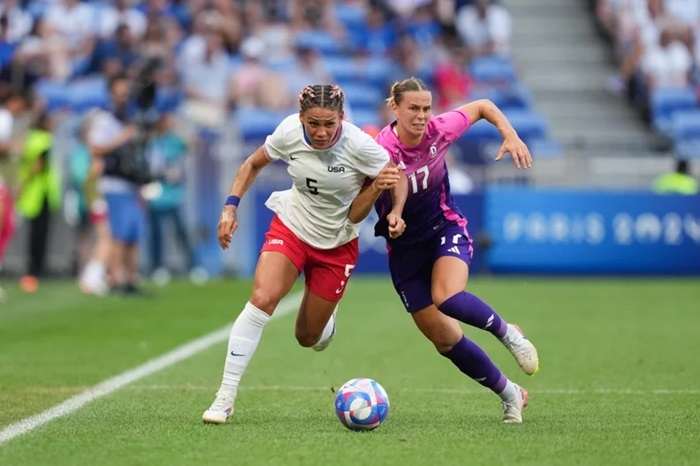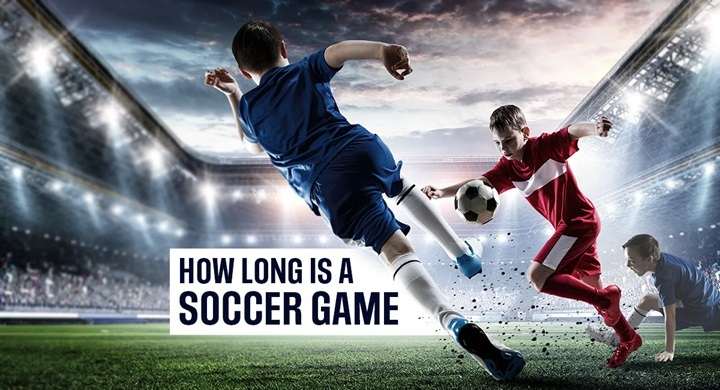Soccer, known as the beautiful game, captivates millions around the world with its thrilling action and strategic depth. But amidst the excitement, one common question often arises: “How long are soccer games?” Whether you’re a seasoned fan or a newcomer to the sport, understanding the duration of a soccer game is crucial for fully appreciating the sport. In this guide, we’ll explore the standard length of a soccer game, factors that influence game duration, and interesting variations you might encounter.
The Standard Duration of a Soccer Game

Regulation Time: 90 Minutes
A typical soccer game is played over two halves, each lasting 45 minutes, making a total of 90 minutes of regulation time. This format is universally recognized in professional, amateur, and youth leagues across the globe. The clock runs continuously during play, except for brief stoppages, ensuring that the game is fluid and uninterrupted.
Halftime Break: 15 Minutes
Between the two halves, there is a halftime break of 15 minutes. This interval allows players to rest, regroup, and receive tactical instructions from their coaches. It also provides an opportunity for fans to stretch their legs, grab a snack, and reflect on the first half’s action.
Injury Time: The Invisible Minutes
Injury time, also known as stoppage time, is added at the end of each half to compensate for disruptions during the game, such as injuries, substitutions, and time-wasting tactics. The referee is responsible for determining the amount of injury time, which can vary depending on the game’s circumstances. Typically, injury time ranges from one to five minutes, but it can be longer in cases of significant delays.
Variations in Game Length
Extra Time: The Battle Beyond 90 Minutes
In knockout-stage tournaments, when the match ends in a draw after 90 minutes, the game progresses to extra time. Extra time consists of two additional 15-minute halves, adding up to 30 more minutes of play. This format allows teams another opportunity to break the deadlock and advance to the next round. If the score remains tied after extra time, the game proceeds to a penalty shootout.
Penalty Shootout: The Ultimate Decider
If extra time does not produce a winner, a penalty shootout determines the outcome. In this high-pressure scenario, each team selects five players to take penalties from the spot. The team with the most successful penalties after these initial five attempts wins the game. If the score is still tied, the shootout continues with sudden-death penalties until a winner is determined.
Youth and Amateur Leagues: Flexible Durations
In youth and amateur soccer leagues, the duration of games can vary to accommodate the age and skill level of the players. For younger age groups, games might be played in shorter halves, such as 30 or 35 minutes each, to ensure that the players remain engaged and avoid exhaustion. The rules and game length can also differ depending on the league or competition’s specific guidelines.
Factors Influencing Game Duration
Match Interruptions: From Injuries to Weather
Several factors can impact the overall duration of a soccer game. Injuries to players often lead to stoppages in play, which the referee will account for in the injury time added at the end of each half. Adverse weather conditions, such as heavy rain or extreme heat, can also cause delays, leading to longer overall game durations as officials ensure player safety and field conditions are suitable for play.
Tactical Time-Wasting: An Art of Delay
Tactical time-wasting is a strategy employed by some teams to manage the game clock in their favor. This can include deliberate slow play during goal kicks, throw-ins, and substitutions. While such tactics can affect the flow of the game, referees are trained to address excessive time-wasting to maintain fairness and the game’s integrity.
Interesting Variations in Soccer Game Formats

Futbol Sala (Futsal): A Faster Pace
Futsal, a variant of soccer played on a smaller, hard court with a smaller ball, features shorter game durations compared to traditional soccer. A futsal match consists of two 20-minute halves, with the clock stopping for stoppages in play. This format emphasizes quick, skillful play and is popular in indoor settings and youth development programs.
Beach Soccer: Sun, Sand, and Shorter Matches
Beach soccer, played on sandy beaches, has a different game duration compared to traditional soccer. Matches are played in three 12-minute periods, providing a faster-paced and more intense game suited to the beach environment. The shorter periods contribute to the high-energy nature of the sport and the unique challenges of playing on sand.
Six-a-Side Soccer: A Compressed Experience
Six-a-side soccer, played with six players on each team and often on a smaller pitch, features shorter game durations to match its compact format. Games typically consist of two 25-minute halves, allowing for a quicker and more action-packed experience. This format is popular in recreational leagues and tournaments where time constraints or space limitations are factors.
Related Post:
Big Brother Reindeer Games: A Winter Wonderland of Competition
2 Player Games Unblocked: The Ultimate Guide to Fun and Friendly Competition
OVO Cool Math Games: A Complete Guide to Mastering the Game
Understanding how long soccer games last enhances your appreciation of the sport, from the thrill of regulation time to the tension of extra time and penalty shootouts. Whether you’re watching a professional match or participating in a youth league game, knowing the game’s duration helps you better engage with the action and the strategies at play. Soccer’s adaptability in game length across various formats and levels adds to its global appeal, ensuring that fans and players alike can enjoy the beautiful game in a variety of exciting ways.


